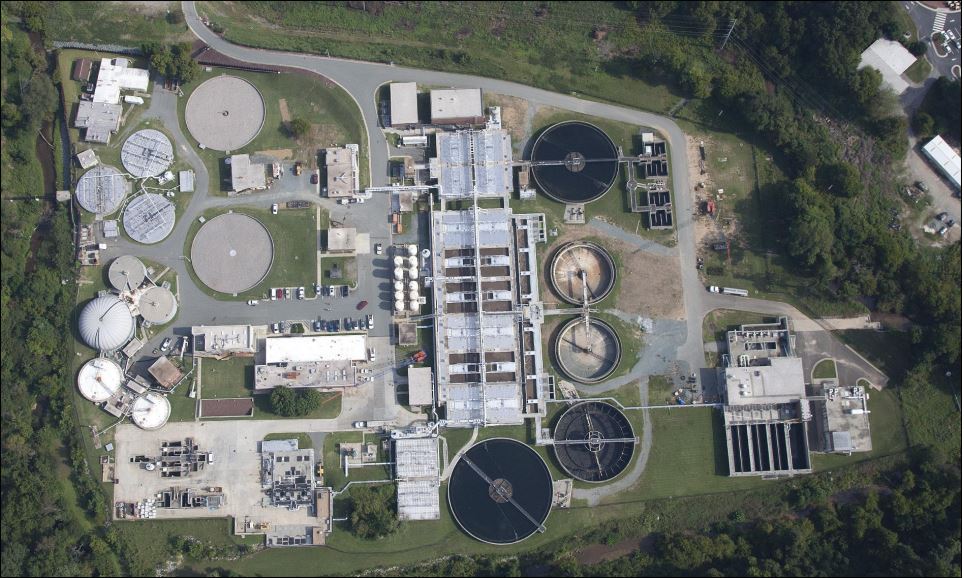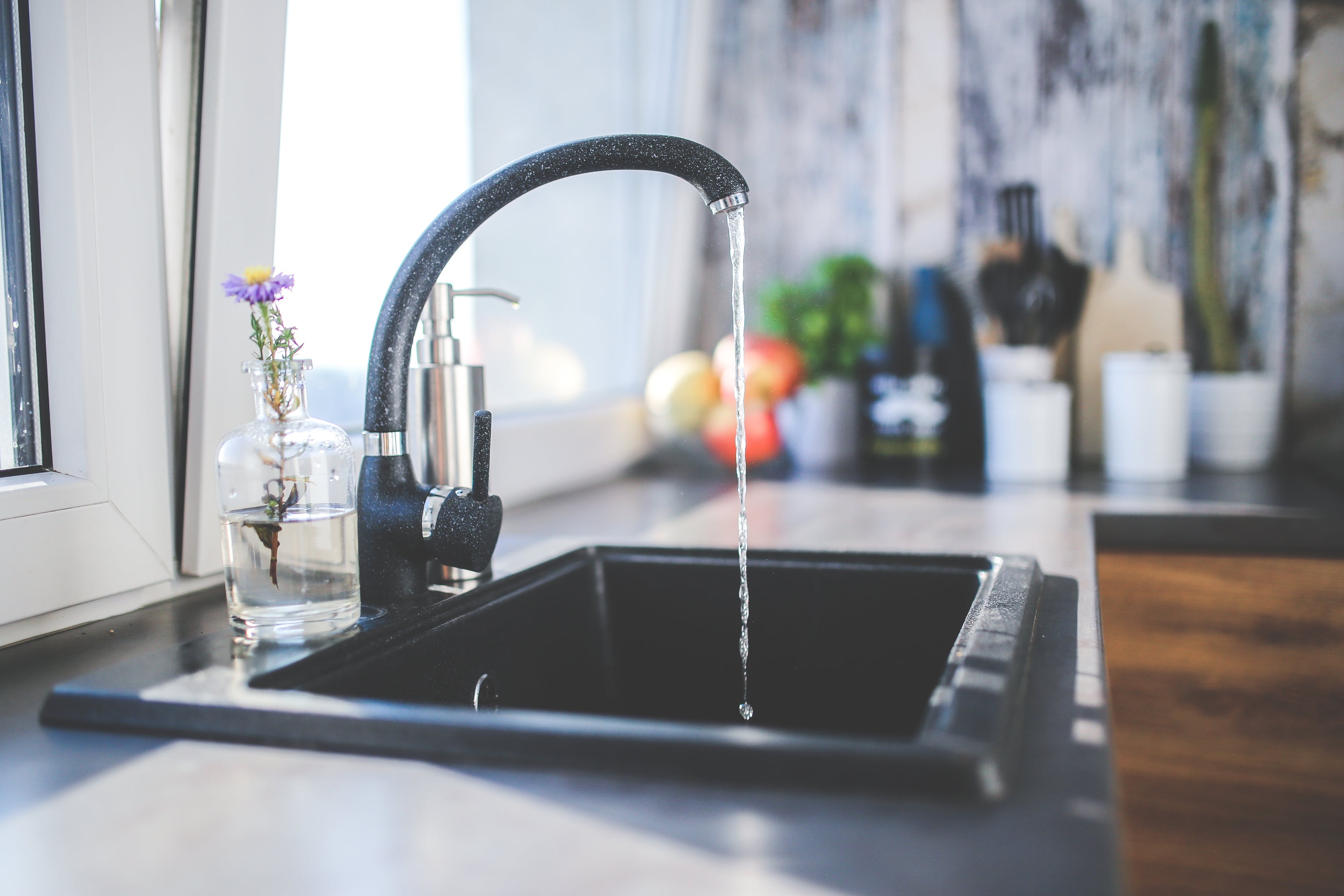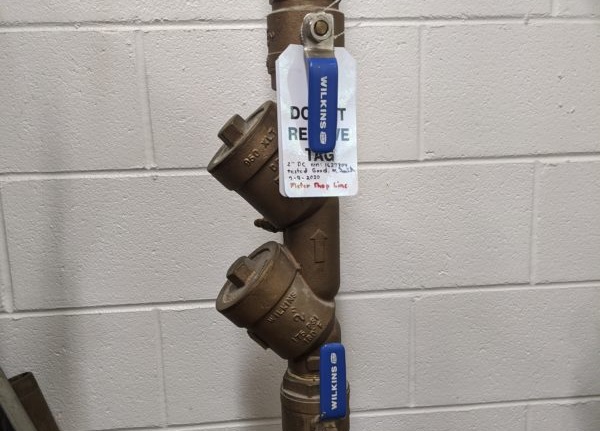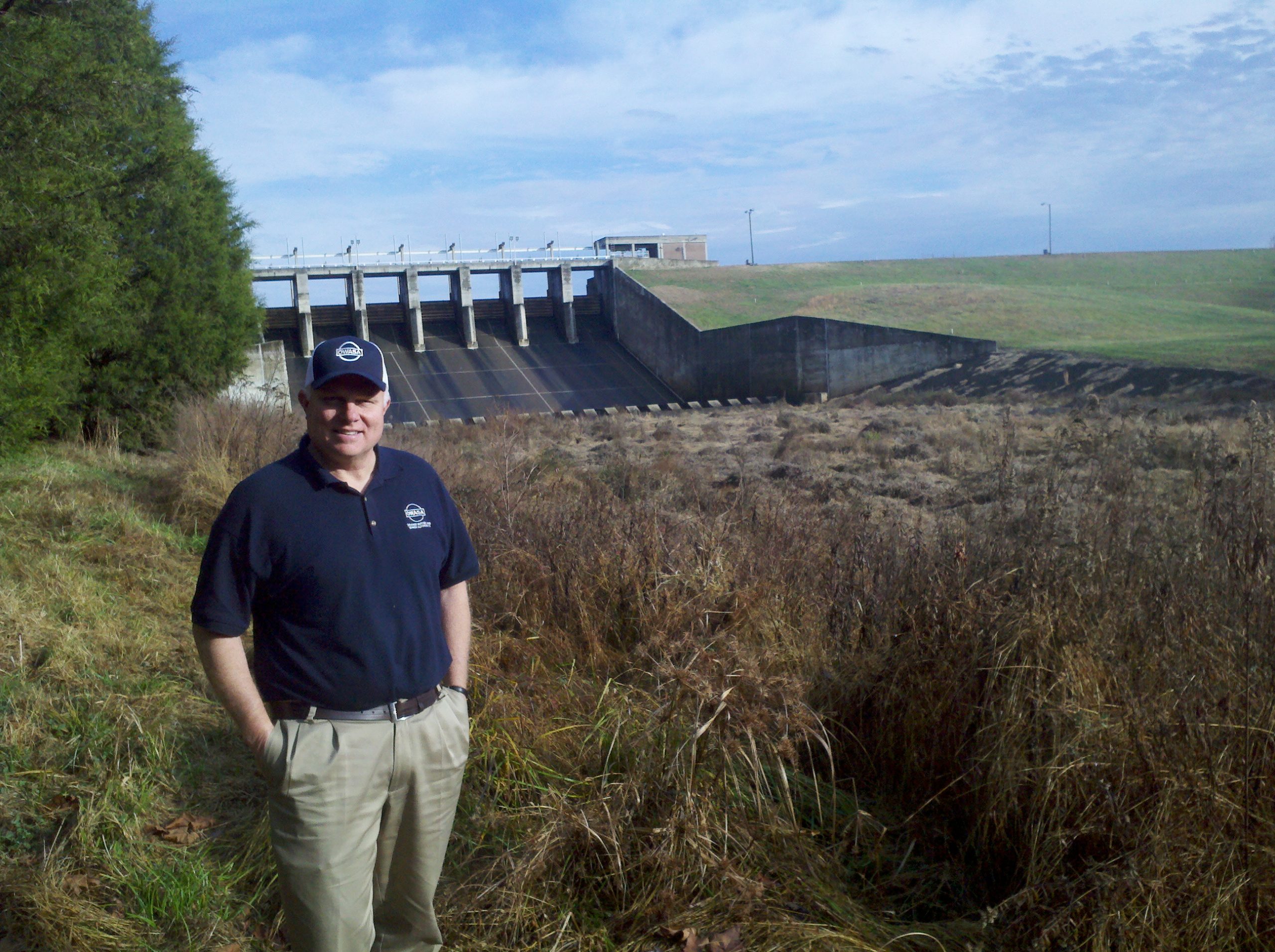This week on “Wonderful Water,” join Aaron Keck as he discusses how our community’s wastewater is managed and optimized with OWASA wastewater treatment plant and biosolids recycling manager Monica Dodson — as well as Wil Lawson, OWASA’s operations supervisor. You can listen to their full conversation below, and learn more about OWASA’s wastewater treatment here.

Rotary press discharging dewatered biosolids into container at the Mason FarmWastewater Treatment Plant. (photo via OWASA)
With the recent release of this year’s freshly revamped OWASA Wastewater Report Card, it’s as good a time as any to talk about what exactly went into treating the 3 billion gallons worth of water that was processed by OWASA in the past year — and what the year ahead looks like.
“Our main goal is to make sure that that wastewater remains in the pipe so that it can safely make it to our facility for treatment,” said Dodson. “We have a crews that regularly clean and inspect our sewer lines to help prevent any buildup or blockages. They use cameras to assess the condition of the system and look for cracks or potential areas where maybe roots have made it into the system.”
That pipe maintenance takes place across roughly 350 miles of pipe, according to Dodson, and in 21 pumping stations that move water from low-lying areas to higher elevation in order to take advantage of gravity to more efficiently move water to OWASA’s treatment facility. From there, a combination of physical, chemical and biological processes are implemented to make wastewater useful again.
“For me, the most interesting fact about this is that the majority of the treatment is done by the bacteria that comes naturally from the humans,” said Lawson. “Then, with the end of the process, we have several items that we gain back that are beneficial to the environment — such as reclaimed water, biogas and biosolids.”

Aaron Keck, Monica Dodson and Wil Lawson
Biogas taken from the treatment process is used to run OWASA boilers — a process that saves the carbon dioxide equivalent of 80 cars off the road each year, according to Lawson. Reclaimed water is re-purposed by UNC to flush toilets, irrigate landscaping and run cooling systems to the tune of 2 billion gallons saved since 2009.
“Wastewater treatment is much more than just about managing waste,” said Dodson. “It’s about water reuse through our reclaimed water system, and about nutrient recovery through our biosolids recycling program. It’s about energy generation through the biogas … and it’s about, you know, us helping create a more sustainable community.”
 Chapel Hill and Carrboro residents use roughly 7 million gallons of water a day, and “Wonderful Water” is a monthly conversation sponsored by the Orange Water and Sewer Authority highlighting its work to keep our community growing and water flowing.
Chapel Hill and Carrboro residents use roughly 7 million gallons of water a day, and “Wonderful Water” is a monthly conversation sponsored by the Orange Water and Sewer Authority highlighting its work to keep our community growing and water flowing.
Podcast: Play in new window | Download
Subscribe:
Related Stories
‹

Wonderful Water: Wastewater Treatment and the Annual Report CardThis month on “Wonderful Water,” join 97.9 The Hill’s Brighton McConnell for a conversation with Wil Lawson, the operations supervisor at OWASA‘s Mason Farm wastewater treatment plant. Lawson discussed the annual OWASA Wastewater Report Card, which was just released for 2021. Each year, the report informs community members how well the treatment plants are meeting […]
![]()
Wonderful Water: Allison Spinelli for Wonderful WaterIn the newest edition of Wonderful Water, learn about the Orange Water and Sewer Authority's capital improvement projects. OWASA's Capital Projects Engineering Manager Allison Spinelli joins 97.9 The Hill's Brighton McConnell to share more about her team and several ongoing and upcoming projects in the community.
![]()
Wonderful Water: Stephen WintersAs budget season continues across our local government, the same is happening at the Orange Water and Sewer Authority. Director of Finance and Customer Service Stephen Winters joins 97.9 The Hill's Brighton McConnell to speak about how OWASA's proposed budget came together and how the community can share their thoughts on it.

Wonderful Water: Preparing for Board AppointmentsFor this edition of “Wonderful Water,” two members of the Orange Water and Sewer Authority’s Board of Directors joined 97.9 The Hill’s Brighton McConnell on the air. Chair of the board Ray DuBose and Vice Chair Bruce Boehm shared details on how people interested in representing the community on OWASA’s board can get involved. The […]

Wonderful Water: Care to Share DayThis month on “Wonderful Water” join 97.9 The Hill’s Aaron Keck for a conversation with Denise Battle, OWASA’s customer service manager, about the second annual Care to Share Day — happening on November 19 — and the opportunities the day provides to help those in our community who need it. “OWASA has been preparing for […]

Wonderful Water: Protecting Our WaterThis month on “Wonderful Water” join 97.9 The Hill’s Aaron Keck for a conversation with Nick Rogers, distribution and collection systems assistant manager at OWASA, about the methods and protocols that keep our community’s water supply safe and sound. “That’s a big part of OWASA,” said Rogers. “We inspect and maintain our infrastructure here, trying […]

Wonderful Water: Jennifer Hunter & OWASA's Report CardThis month on “Wonderful Water” join 97.9 The Hill’s Aaron Keck for a conversation with Jennifer Hunter, laboratory supervisor at OWASA‘s Mason Farm wastewater treatment plant, for a discussion about the annual OWASA wastewater quality report card. According to OWASA, the roughly 3 billion gallons of wastewater treated every year has once again “met or […]

Wonderful Water: Ed Kerwin's OWASAAs Ed Kerwin retires from his 24-year tenure at OWASA as executive director, he joins 97.9 The Hill’s Aaron Keck for a conversation about his career and all the work it’s taken to keep the water running for over two decades. “I love my job as much today as I did 24 years ago,” said […]

Wonderful Water: OWASA's Report CardThis week on Wonderful Water, join 97.9 The Hill’s Aaron Keck for a conversation with Katie Harwell, laboratory supervisor at OWSA’s water treatment plant on Jones Ferry Road, about OWASA’s latest round of in-depth water testing and the associated annual report card. According to Harwell, in the past year OWASA has met or surpassed all […]

Wonderful Water: Budgets and RatesThis week on Wonderful Water, join 97.9 The Hill’s Aaron Keck for a conversation with Stephen Winters, director of finance and customer service at OWASA, concerning OWASA’s financial planning in 2020. As OWASA prepares its annual budget to account for ensuring water service to its customers and the investment required to maintain roughly 700 miles […]
›


 Chapel Hill and Carrboro residents use roughly 7 million gallons of water a day, and “Wonderful Water” is a monthly conversation sponsored by the Orange Water and Sewer Authority highlighting its work to keep our community growing and water flowing.
Chapel Hill and Carrboro residents use roughly 7 million gallons of water a day, and “Wonderful Water” is a monthly conversation sponsored by the Orange Water and Sewer Authority highlighting its work to keep our community growing and water flowing.







